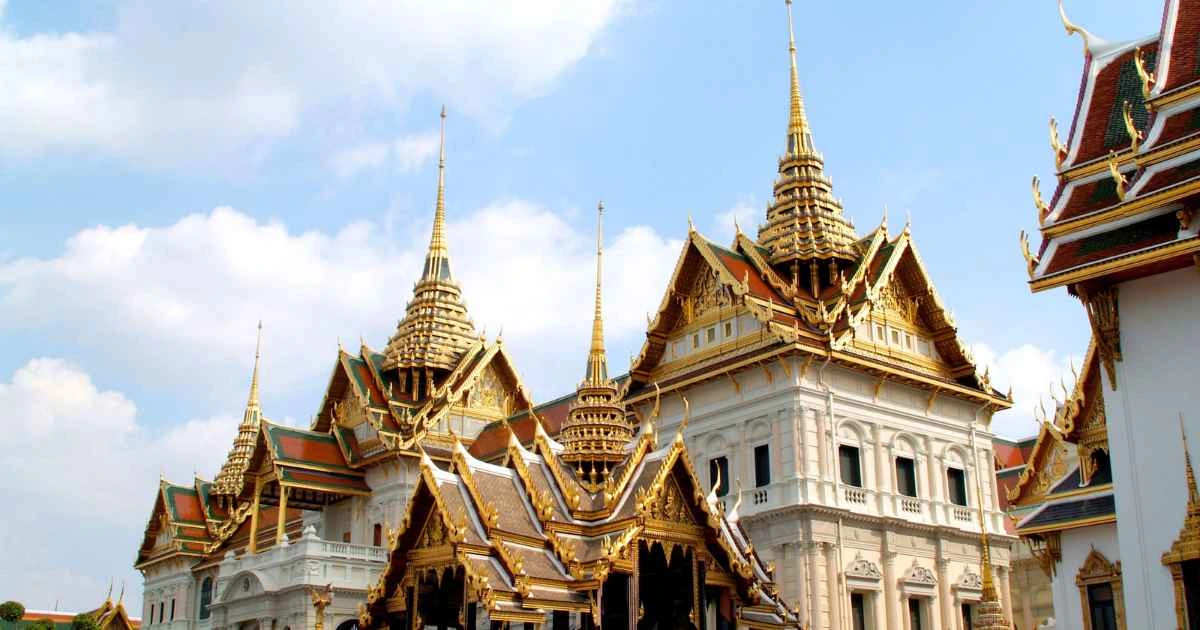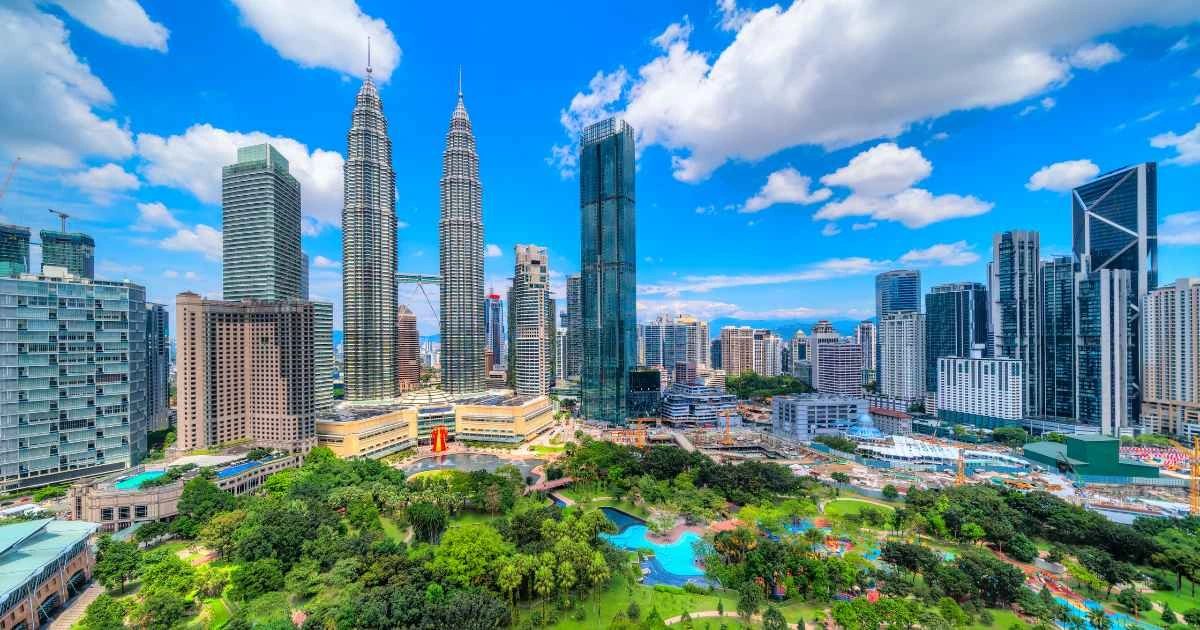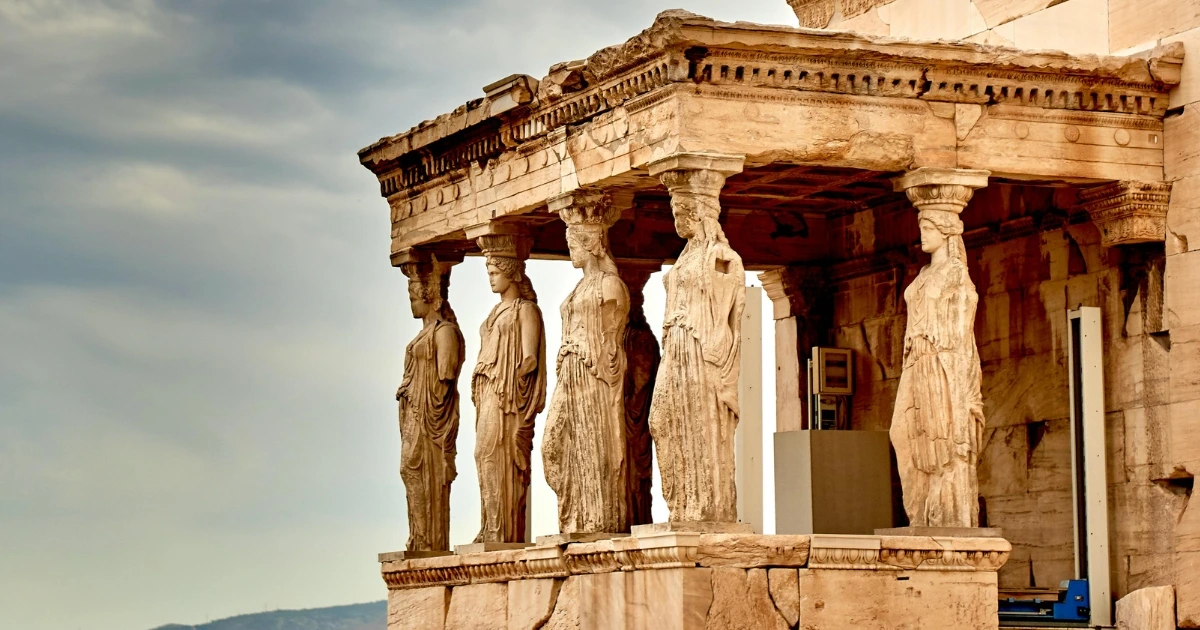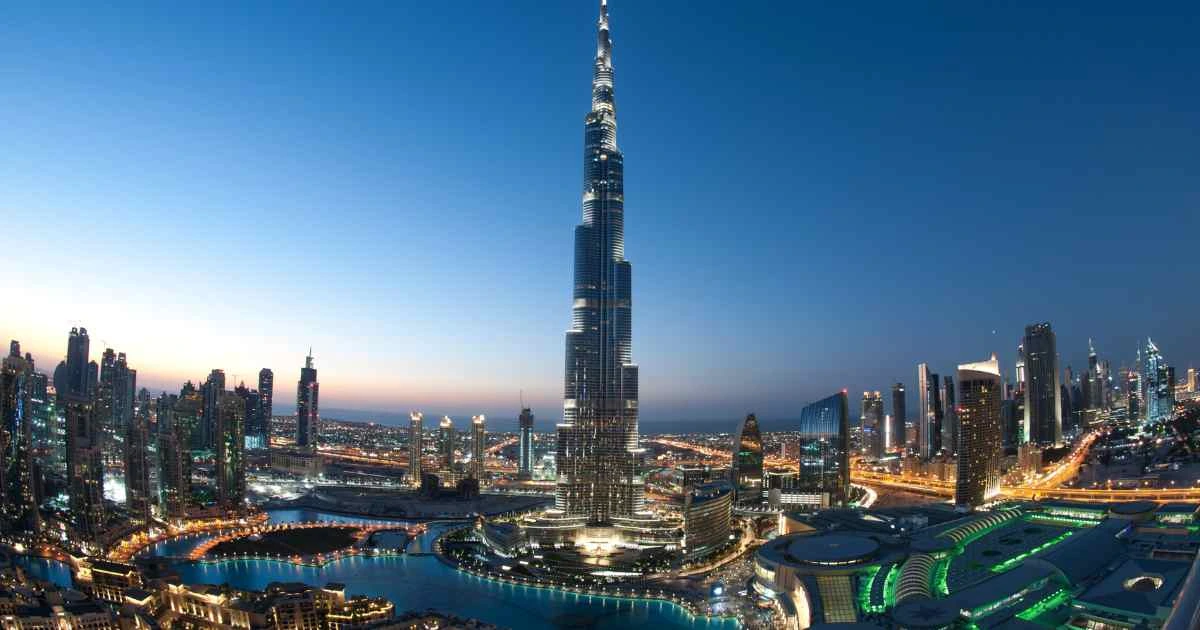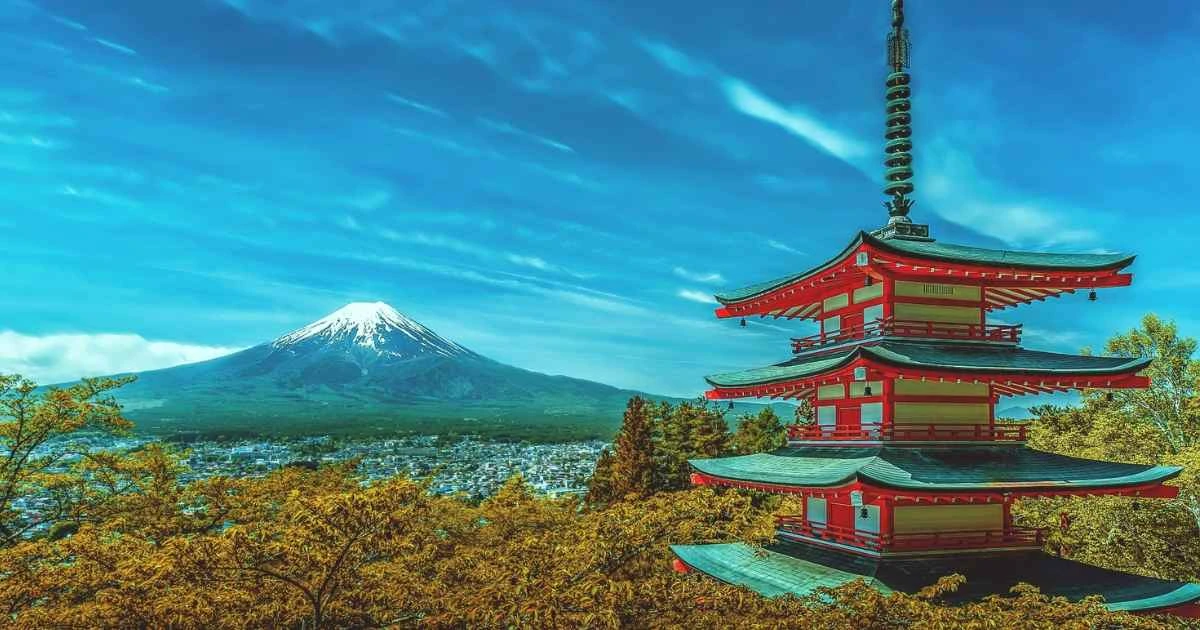What to Do in Bangkok: 10 Must-Try Experiences in Thailand’s Capital
Wondering what to do in Bangkok? This vibrant city blends ancient temples, buzzing markets, colorful street life, and modern attractions into an unforgettable adventure. Whether you crave cultural experiences, shopping sprees, or mouthwatering food, Bangkok has endless surprises waiting for you.
Table of Contents
Key Takeaways
- Bangkok offers diverse activities combining ancient temples with authentic cultural immersion
- The best unique things to do in Bangkok include both famous landmarks and off-the-beaten-path experiences
- Activities range from free temple visits to premium cultural experiences with options for every budget
- Most attractions are accessible via Bangkok’s comprehensive transportation system including BTS, MRT, and river boats
- The 10 unique things to do in Bangkok can be enjoyed year-round, though November to February offers more comfortable weather
10 What to Do in Bangkok
1. Explore the Grand Palace and Wat Phra Kaew
The Grand Palace complex represents Bangkok’s most famous landmark and should top any visitor’s list of what to do in Bangkok. This sprawling royal compound houses Thailand’s most sacred temple, Wat Phra Kaew (Temple of the Emerald Buddha), where a small jade Buddha image holds tremendous spiritual significance for Thai people.
The dazzling architecture features golden spires, colorful mosaic tiles, and mythological guardian figures that exemplify traditional Thai aesthetic principles. Though no longer the royal residence, the complex continues to host important ceremonial events and attracts both tourists and local worshippers.
Useful Information:
- Cost: 500 Baht ($15 USD)
- Hours: 8:30 AM to 3:30 PM daily
- Dress Code: Shoulders and knees must be covered
- Tips: Visit early morning to avoid crowds and midday heat
2. Experience Floating Markets
When considering what to do in Bangkok, exploring the city’s famous floating markets offers insight into Thailand’s traditional water-based commerce. While Damnoen Saduak is the most famous, the nearby Amphawa Floating Market provides a more authentic experience with fewer tourists.
Vendors paddle wooden boats laden with tropical fruits, freshly cooked noodles, and souvenirs through narrow canals. The vibrant colors, aromatic food stalls, and bustling activity create an unforgettable sensory experience that connects visitors to Bangkok’s history as a canal-based city.
Useful Information:
- Cost: 1000-1500 Baht ($30-45 USD) for transportation and boat ride
- Hours: Damnoen Saduak active 7:00 AM to 11:00 AM; Amphawa operates weekends 2:00 PM to 8:00 PM
- Tips: Arrive early to avoid tourist crowds and bring small bills for purchases
3. Visit Wat Arun (Temple of Dawn)
Wat Arun’s distinctive prang (spire) dominates Bangkok’s riverside skyline, making it an essential destination when deciding what to do in Bangkok. Unlike most Thai temples, its unique architectural style features ornate floral mosaics made from broken Chinese porcelain, creating a dazzling effect when caught by sunlight.
Climbing the steep steps provides panoramic views across the river to the Grand Palace and Wat Pho. Despite its name, the temple actually offers its most spectacular views at sunset when the spires are backlit by the fading daylight.
Useful Information:
- Cost: 100 Baht ($3 USD)
- Hours: 8:00 AM to 6:00 PM daily
- Tips: Cross the river by ferry from Tha Tien pier near Wat Pho for just 4 Baht
4. Sample Street Food
No list of what to do in Bangkok would be complete without diving into the city’s world-renowned street food scene. Bangkok’s culinary landscape ranges from simple cart vendors to bustling night markets where plastic stools and folding tables serve as impromptu dining rooms under the stars.
Must-try dishes include pad thai (stir-fried noodles), som tam (papaya salad), moo ping (grilled pork skewers), and mango sticky rice for dessert. Popular food destinations include Chinatown’s Yaowarat Road, the evening vendors along Sukhumvit Soi 38, and the comprehensive selection at Or Tor Kor Market.
Useful Information:
- Cost: 40-80 Baht ($1.20-2.40 USD) per dish
- Best Areas: Chinatown, Sukhumvit Soi 38, Victory Monument
- Tips: Look for stalls with local customers and high turnover for freshest options
5. Explore Chatuchak Weekend Market
When researching what to do in Bangkok, Chatuchak Weekend Market invariably appears as a must-visit destination. This massive market spans over 35 acres and contains more than 8,000 stalls selling everything imaginable—from vintage clothing and handcrafted furniture to exotic plants and live animals.
The market’s 27 sections are organized by merchandise type, though first-time visitors will inevitably get happily lost in the labyrinthine layout. Beyond shopping opportunities, the market offers an authentic slice of Bangkok life as locals and tourists bargain, browse, and socialize amid a kaleidoscope of sights, sounds, and aromas.
Useful Information:
- Cost: Free entry; purchases as desired
- Hours: Saturday and Sunday 9:00 AM to 6:00 PM
- Getting There: BTS to Mo Chit station or MRT to Chatuchak Park station
- Tips: Arrive early, wear comfortable shoes, and keep valuables secure
6. Take a Thai Cooking Class
Learning to recreate Thai flavors yourself ranks high on the list of what to do in Bangkok for food enthusiasts. The best cooking classes begin with guided market tours where instructors explain unfamiliar ingredients before proceeding to hands-on cooking sessions.
Participants typically learn to prepare 4-5 classic dishes like tom yum soup, green curry, and pad thai while mastering fundamental techniques—pounding curry pastes, balancing the four essential flavors (sweet, sour, salty, spicy), and presenting dishes with traditional garnishes.
Useful Information:
- Cost: 1000-2000 Baht ($30-60 USD)
- Duration: Half-day (4 hours) to full-day (8 hours)
- Recommended Schools: Silom Thai Cooking School, Bangkok Thai Cooking Academy
- Tips: Morning classes typically visit fresher, more active markets
7. Discover Nightlife on Khao San Road
For many younger travelers deciding what to do in Bangkok, experiencing the legendary Khao San Road remains a priority. This short street transformed from a quiet residential area into the epicenter of Bangkok’s backpacker scene, offering budget accommodations, international restaurants, lively bars, and street vendors selling everything from pad thai to scorpion snacks.
The pedestrian-friendly atmosphere creates a festive street party every evening as travelers from around the world mingle with enterprising locals. While certainly touristy, the area provides an entertaining introduction to Bangkok’s nightlife with minimal language barriers and plenty of people-watching opportunities.
Useful Information:
- Cost: Free to explore; drinks 80-180 Baht ($2.40-5.40 USD)
- Hours: Most active from 6:00 PM until 2:00 AM
- Tips: Visit neighboring Soi Rambuttri for a slightly more relaxed atmosphere
8. Cruise the Chao Phraya River
When planning what to do in Bangkok, a river cruise offers respite from the city’s congested streets while providing unobstructed views of major landmarks. The Chao Phraya River functions as Bangkok’s aquatic main street, with express boats, long-tail boats, and dinner cruises navigating past temples, hotels, and historic buildings.
The affordable public express boats function like floating buses, stopping at major piers near attractions. For a more customized experience, private long-tail boat tours can explore quieter canals (khlongs) in Thonburi district, revealing traditional wooden houses on stilts and glimpses of riverside life largely unchanged by urbanization.
Useful Information:
- Cost: 20 Baht ($0.60 USD) for public boats; 1000-1500 Baht ($30-45 USD) for private tours
- Public Boat Hours: 6:00 AM to 7:00 PM
- Departure Points: Central Pier near Saphan Taksin BTS station
- Tips: Use the tourist boat for a hop-on-hop-off experience with English commentary
9. Visit Jim Thompson House
For those wondering what to do in Bangkok that escapes the typical tourist track, the Jim Thompson House provides a serene cultural oasis. This museum complex showcases the beautiful traditional Thai residence of American businessman Jim Thompson, who revitalized Thailand’s silk industry before his mysterious disappearance in 1967.
The compound features six traditional teak houses transported from various parts of Thailand and reassembled beside a canal in central Bangkok. The buildings house Thompson’s impressive collection of Southeast Asian art and antiques, while the lush tropical garden creates a peaceful setting that belies its location near bustling commercial districts.
Useful Information:
- Cost: 200 Baht ($6 USD)
- Hours: 9:00 AM to 6:00 PM daily
- Location: Soi Kasemsan 2, opposite National Stadium
- Tips: Tours in English run throughout the day; photography prohibited inside buildings
10. Relax with Thai Massage
After days of exploration, experiencing traditional Thai massage becomes an essential part of what to do in Bangkok. This therapeutic tradition, with roots in Ayurvedic and Chinese medicine, combines acupressure, stretching techniques, and energy work to relieve tension and restore balance.
Options range from budget-friendly shophouse operations to luxury spa complexes. For an experience that combines quality treatment with social impact, consider visiting massage centers like Perception Massage that employ visually impaired practitioners. The ancient Wat Pho temple complex also houses Thailand’s most respected massage school, offering authentic treatments in historic surroundings.
Useful Information:
- Cost: 250-500 Baht ($7.50-15 USD) for traditional Thai massage
- Duration: Typically offered in 1-2 hour sessions
- Recommended Venues: Wat Pho Massage School, Health Land Spa, Perception Massage
- Tips: Communicate clearly about pressure preferences; modest clothing provided
FAQ
Is Bangkok safe for tourists?
Bangkok is generally very safe for visitors, with street crime being rare. Still, it’s wise to stay alert in crowded places like markets and public transit areas to avoid petty theft. Trust your instincts and keep valuables secure.
What’s the best time to visit Bangkok?
The ideal time to explore Bangkok is between November and February, when temperatures are cooler and humidity is lower. Travelers should avoid April if possible, as it brings intense heat, especially during the Songkran festival.
How many days should I spend in Bangkok?
A three-day trip lets you experience Bangkok’s essential sights like the Grand Palace and bustling markets. If you can stretch your stay to five days, you’ll have time to discover hidden gems, vibrant neighborhoods, and local hangouts.
Is Bangkok expensive for tourists?
Bangkok caters to every budget. Backpackers can easily get by on $30 a day, enjoying street food and hostels, while luxury travelers will find five-star hotels, fine dining, and spas more affordable than in many Western cities.
Do I need a visa to visit Thailand?
For many travelers, Thailand offers visa-free entry for stays of up to 30 days. However, visa policies can change, so it’s essential to check the latest entry requirements based on your nationality before booking flights.
What should I wear when visiting temples?
Dress respectfully when visiting temples: shoulders and knees should be covered. Lightweight, breathable clothing works best, and a scarf in your bag can double as a quick cover-up for unexpected temple visits.
How do I avoid taxi scams in Bangkok?
Always insist that the driver use the meter at the beginning of the ride. For extra reliability and clear pricing, consider using ride-hailing apps like Grab, which are widely available throughout the city.
Is street food safe to eat?
Street food is a must-try in Bangkok. To enjoy it safely, choose busy stalls where food turnover is high and locals are lining up. Freshly cooked dishes are your best bet for a delicious and safe meal.
What’s the best area to stay in Bangkok?
Each neighborhood offers something unique: Sukhumvit is perfect for shopping and nightlife, Riverside charms with scenic views and luxury hotels, while Khao San Road appeals to budget travelers and backpackers seeking a lively vibe.
How do I get from Bangkok airport to the city?
You have two great options: The Airport Rail Link provides a fast, affordable route into central Bangkok, ideal for avoiding traffic. Taxis are more convenient if you’re carrying lots of luggage, though you should prepare for potential traffic jams.


